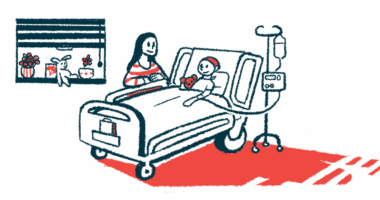Switching to Nexviazyme reverses decline in boy with IOPD
Case study: Youth had developed strong immune response against Lumizyme

Switching to Nexviazyme (avalglucosidase alfa) was safe and effective in a 12-year-old boy with infantile-onset Pompe disease (IOPD) who developed a strong immune response against Lumizyme (alglucosidase alfa) that affected treatment efficacy.
That’s according to a case study in South Korea, which supports the use of Nexviazyme in IOPD patients with high levels of antibodies against Lumizyme and an associated functional decline.
The case study, “Efficacy of avalglucosidase alfa in infantile-onset Pompe disease with high anti-alglucosidase alfa antibody titers,” was published in the form of a clinical note in Pediatrics International.
Lumizyme, Nexviazyme are both ERTs approved to treat Pompe
People with Pompe disease lack the acid alpha-glucosidase (GAA), an enzyme that breaks down a large sugar molecule called glycogen. In IOPD, there is minimal to no GAA enzyme activity. Early and rapid glycogen accumulation in tissues, mostly muscles, results in heart disease, low muscle tone, and respiratory failure early in life.
The main treatment for Pompe disease is enzyme replacement therapy (ERT), which provides patients with a lab-made version of the GAA enzyme. Sometimes, however, the immune system sees the enzyme as a foreign substance and produces antibodies against it, making it less effective.
Sanofi’s Lumizyme and Nexviazyme, sold respectively as Myozyme and Nexviadyme in Europe, are two ERTs approved for Pompe. While both contain a working version of GAA, Nexviazyme is modified to enhance delivery to muscle cells.
“However, real-world data on [Nexviazyme] in IOPD are limited,” the researchers wrote.
Patient developed high levels of antibodies against Lumizyme
In this study, researchers in South Korea described the case of a boy with IOPD who switched to Nexviazyme after developing high levels of antibodies against Lumizyme that affected its efficacy.
The boy presented with low muscle tone at 8 months of age, followed by hypertrophic cardiomyopathy, a condition in which the heart becomes enlarged and cannot pump blood efficiently, and heart failure at 14 months.
Blood tests revealed markedly reduced GAA activity and disease-causing mutations in the gene that codes for GAA, confirming an IOPD diagnosis.
Clinicians immediately started the boy on Lumizyme (20 mg/kg), administered via an intravenous, or into-the-vein, infusion once every two weeks.
His heart function normalized within three months, and the left ventricular mass index (LVMI), a marker for cardiomyopathy, dropped (improved) to within the normal range in the third year of treatment. He also walked independently at 16 months and was able to walk quickly until he was 12 years of age.
While he always received a painkiller, an antihistamine, and a steroid 30 minutes before each infusion to minimize side effects, he eventually started to experience serious allergic reactions during Lumizyme infusions.
These were managed by pausing the infusion for 1 to 2 hours, along with slower infusion rates and additional premedications.
Blood tests showed an eight-fold rise in the levels of antibodies against Lumizyme from 6 months of age to 4 years.
Boy saw multiple benefits after switching to Nexviadyme
In the sixth year of ERT, his LVMI worsened, and lung function declined. He started to need noninvasive breathing support during sleep after the 10th year of treatment. At nearly 12 years of age, tests showed a severe decline in lung function, which fell even further by age 13, requiring even more breathing support.
In parallel, his motor function declined, leading to wheelchair dependence after a toe injury at nearly 13 years of age. Despite his deteriorating heart and motor function, the blood levels of creatine kinase, a marker for muscle damage, remained stable.
At this point, clinicians switched the boy to Nexviadyme at twice the recommended dose (40 mg/kg, once every other week). Eight months later, he had gained 8.2 kg (18 pounds) in weight, and his motor function improved. He regained his ability to walk independently after nine months of treatment.
The boy’s creatine kinase levels also dropped, his breathing improved, and LVMI began to drop one month after the switch, reaching normal values after about a year of Nexviadyme treatment.
While the boy had high levels of antibodies against both Lumizyme and Nexviadyme after 14 months of Nexviadyme treatment, he only experienced two mild allergic reactions, which were resolved with antihistamines.
This case “supports the efficacy and safety of [Nexviadyme] as well as the efficacy of dose escalation of ERT in IOPD patients with high [anti-Lumizyme levels] and a secondary functional decline after long-term [Lumizyme] therapy,” the researchers wrote.








